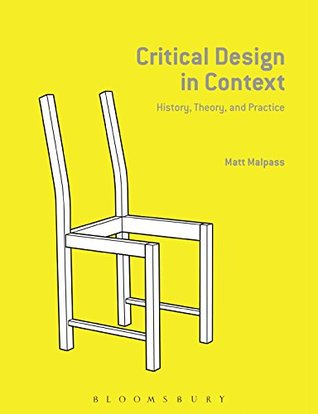While critical design might heavily borrow from [art] methods and approaches, it definitely is not art. We expect art to explore extremes, but critical design needs to be close to the everyday and the ordinary as that is where it derives its power to disturb and question assumptions. […] It is only when read as design that critical designs can suggest that the everyday as we know it could be different – that things could change. (Raby 2008, 95)
Welcome back. Just a moment while we sign you in to your Goodreads account.


